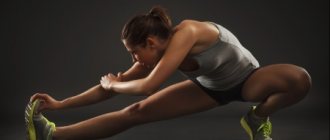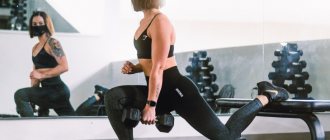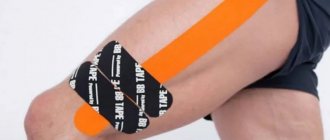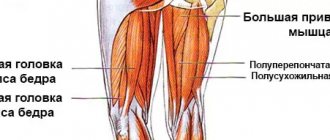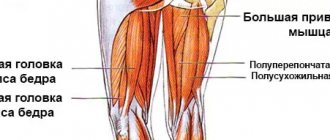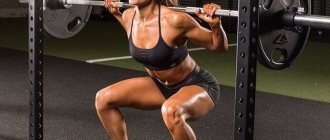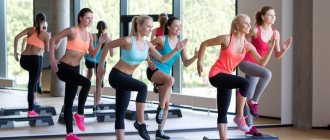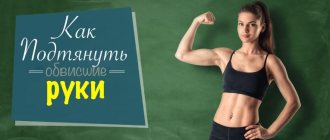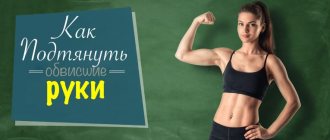Content
- Adagio
- Allegro
- A la seconde
- Aplomb
- Arabesque
- Attitude
- Assembly, pas
- Emboite, pas
- Enavant
- Enarriere
- Endedans
- Endehors
- Enl'air
- Entournant
- Enface
- Entree
- Entrechat
- Balance,pas
- Balancoire, battement
- Ballon
- Ballonne, pas
- Ballote, pas
- Battements
- Brise, pas
- Variation
- Glissade, pas
- Grand
- Divertissement
- Code
- Corps de ballet
- Coupe, pas
- Croisee, pose
- Level, temps
- Manage
- Marche, pas
- Menus, pas
- Pas
- Pas de bourree
- Pas de chat
- Pas de ciseaux
- Pas de poisson
- Pass-pied
- Passe
- Plie
- Port de bras
- Releve
- Renverse, pas
- Ciseaux
- Saute, temps
- Suivi
- Sussous
- Ferme
- Fermee, sissonne
- Fondu, battement
- Fondue, sissonne
- Frappe, battement
- Fouette
- Chaines, tours
- Changement depied
- Chasse, pas
- Chat
- Ecartee
- Echappe, pas
- Epaulement
In classical choreography, as in other dance styles, there is its own set of terminology. The peculiarity of the ballet is that the terms are mainly taken from the French language. Initially, during the birth of this art in France, the names were borrowed from Italian, but already at the beginning of the 18th century, the vocabulary of ballet developed and was based on French terms. The only Italian words left in terminology are:
- pirouette (full 360 turn of the whole body on one leg);
- cabriole (a jump during which the dancer kicks one leg with the other);
- revoltad (a jump during which one leg is crossed over the other and a turn is performed).
Most of the terms imply a specific movement that the dancer performs (stretching, bending, extending, sliding, lifting, etc.), some focus on the nature of the performance (solemnity, gurgling, etc.), while others determine the occurrence of the movement, for example, bourre. Some names do not belong to either category, such as entrechatroyale (royal leap in honor of Louis XIV) or sissonne (invented by François de Roissy, Count of Sisson, in the 17th century).
To understand the language of classical choreography, we suggest that you familiarize yourself with the dictionary of ballet terminology.
A - E
- Adagio (from Italian adajio translates as “slowly”, “calmly”). A part of the dance that is performed slowly to calm music. The concept is used not only in the sense of music, but also:
- A separate dance, or part of a musical choreographic production, which is performed by one, two or more soloists. The most common is the adagio performed by a duet;
For exercise - exercises at the choreographic barre or in the center of the hall, which consist of a set of poses and exercises, turning elements, bending in a calm rhythm. The task of the adagio is to develop stability, expressiveness, musicality, harmony and smooth transitions from one movement to another;
- Allegro (allegro in Italian means quickly, deftly, quickly) is a set of exercises in the center of the hall, which consists of jumps of different heights and speeds;
- A laseconde (literal translation - to the second) - the working leg is moved (opened) to the side on the toe, or rises to a height; in this position, the working leg is open with the toe to the floor or raised;
- Aplomb (balance) – the ability of a dancer to stand in one position or another on one leg for a long time;
- Arabesque (Italian arabesco - Arabic) is one of the main movements in classical choreography. During its execution, the working leg is extended at the knee and opens back with the toe extended to the floor, or rises up. The position of the hands is allongee, the gaze is directed into the distance, which gives the pose gracefulness and expressiveness. Arabesque symbolizes an elusive dream, this is the leitmotif of Giselle or La Sylphide - popular romantic heroines. During the exercise, the supporting leg can stand completely on the foot, half toes/toes, be extended or bent at the knee. Sometimes it is performed with emphasis on the knee and abduction of the second leg. If the pose is performed in a jump, then the position of the leg may be different (strictly perpendicular to the floor, thrown forward, etc.). The Russian ballet school divides arabesque into four types. The first two are open (arabesque effacee), the third and fourth are closed (arabesque croisee). The old ballet school identified a fifth type of arabesque, in which the body tilted and the arms rose forward allongee. Arabesque penchee - a pose in which the body leans forward so that the working leg can rise as high as possible;
- Attitude (posture, position):
- It is one of the main positions in classical choreography. During execution, the working leg bends at the knee and rises back to a height. The supporting leg can stand on the foot, fingers or toes, hands in the allondie position. The figure is the basis for a big jump. To perform it, like the arabesque, you need a strong and flexible back. If the attitude is performed forward, the leg bent at the knee is raised forward, and the heel should be higher than the level of the knee. This is the leitmotif of proud heroines, for example Aurora (ballet “Sleeping Beauty”).
In a broad sense, attitude is any pose that a dancer or dancer assumes;
- Assemble, pas (verb assembler - to assemble). When performing this movement, the working leg can open in any direction with the toe on the floor or in the air, while the dancer simultaneously squats on the supporting leg. Then the working leg is placed in the 5th position on the toes or half-toes. The movement ends in demi-plie. If the figure is performed in a jump, then the legs come together at the moment of flight. The execution of the jump can be varied: on the spot (throw of the leg to a small height, small jump petit pas assemble), or with advancement (strong throw of the leg at 70-90o, extremely high take-off grand pas assemble). In the first case, the movement begins with a jump and throw of the leg from the 5th position. To perform a grand pas assemble, an approach is always required, which will allow you to achieve maximum height in the jump. To maintain balance, the arms are lifted into position and assist in the jump. Additional complications in the form of lifts or double turns can add entertainment and virtuosity to the movement. The main difference between the pas double assemble (performed on the fingers or half-toes on a small jump) is that the figure is performed twice from the same foot. If the position is performed to the side, the change of legs to position 5 is performed at the moment of the second movement;
- Emboite, pas (literal translation tongue and groove) is a figure that is performed by changing legs and transferring body weight from one leg to the other several times in a row.
Petit pas emboite saute - a jump in place or with a turn around its axis with a change of legs. With each execution, the working leg is alternately brought forward or backward into surlecou-de-pied. Grand pas emboite saute is performed with advancement while simultaneously throwing the bent legs as high as possible, often forward or, less often, backward.
Pas emboite can be performed as a run. In this case, each rut is thrown into the air in turn (forward or backward).
Petit pas emboite saute entournant is alternate jumps and a simultaneous turn of 180°. Finally, the replacement leg is brought into the surlecou-de-pied position. The movement is performed with advancement in a straight line or diagonally. Can be performed in a circle in combination with other turns.
Pas emboite sentournant is performed on the fingers or half-fingers, instead of a jump - steps with a simultaneous turn. The leg bent at the knee is brought in the surlecou-de-pied position to the knee and above.
- Enavant (forward) is a term for the position of the front foot or the forward movement of the dancer;
- Enarriere (backward) – This term is used to indicate the back position of the leg, or the backward movement of the dancer;
- Endedans (inward) - indicates the direction of rotation during pirouettes, tours and movements that are performed Entournant to the supporting leg;
- Endehors (outward) - indicates the direction of rotation during pirouettes, tours and movements that are performed by Entournant from the supporting leg;
- Enl'air (in the air) - the term shows that at the moment of execution either the working leg or the whole body is in the air;
- Entournant (in a turn) - the term indicates that the movement is performed simultaneously with the rotation of the body;
- Enface (opposite) – the performer works for the viewer, facing the audience;
- Entree (entrance) – exit of artists in parts;
- Entrechat (entrechat? - from Italian intrecciato - braided, also used to define a crossed jump) - a vertical jump with both legs. At the moment of execution, the legs spread slightly and join in 5th position. The legs do not hit one another, as they are in an everted position from the hip;
Correct technique
You already know what a plie is, now you need to figure out the technique for performing it. There are different variations of the exercise, and in this paragraph we will look at squats without weights. Before you start practicing, consider the following points:
- Stretching is extremely important in the plie squat . You will need to squat deep enough and turn your knees, and without preparing the ligaments this will be extremely difficult. Therefore, we will consider the issue of stretching separately below.
- Clothes should not restrict your movements. It should be such that even theoretically you could do the splits in it.
- Use stable shoes with hard soles. You can wear weightlifting weights.
Now about proper stretching. You will need to work your lower back and leg ligaments. For the lower back, the classic method is used - with straight legs we try to reach the floor with our hands. You can use tilts and turns. To stretch your legs, it is better to use a Swedish wall. You need to approach her and throw your leg as high as you can. Then the leg needs to be straightened. Bend over, stretch your ligaments. Try to fix your body in positions where you feel slight pain. To stretch your legs, try doing the splits, spreading your legs as far apart as you can.
Let's look at how to do plie correctly without weights . The execution technique will be as follows:
- Your legs should be spread as wide as possible, with your toes turned in different directions. Place your hands on your waist. You need to keep your head and back straight.
- Inhale and squat until your thighs are parallel to the horizontal surface, your knees are perpendicular to the inner surface, and your knees are perpendicular to your feet. Stay in this position for a couple of seconds.
- Exhale, return to the starting position. Do the exercise the required number of times and approaches.
The plie exercise without weights is suitable for beginners. Having mastered it, you can proceed to complicated variations with weights.
B - V
- Balance, pas (verb balancer - to swing) - movement in any direction and with stepping of feet in place, consists of pastombe. In essence, this is a pascoupe - an exercise with or without clear fixation of the surlecou-de-pied. The swaying effect is created by slightly bending the body at the waist and tilting the head. It is often performed several times in a row from different legs in any direction, with the addition of various movements and translations of the arms. Due to the fact that the movement is borrowed from the waltz, it is performed in musical time signature ?;
- Balancoire, battement (literally translated - swing) - a movement performed several times in a row with the body engaged. When throwing the working leg forward or backward, the body sharply deviates in the opposite direction. The French ballet school calls large battements grands battements encloche, which translates as bell;
- Ballon (ball, balloon) is the name given to a dancer’s ability to hover in the air while performing a jump. Simultaneously fixing various figures;
- Ballonne, pas – jump on one leg with extension of the working leg and advancement in any direction. Both legs return to the surlecou-de-pied position;
- Ballot e, pas (verb ballotter - to swing) - a jump in which one leg closes and kicks up the other. In this case, the tilt of the body gives a swinging effect;
- Battements (strike, beating) - movements in classical choreography that are aimed at developing strength, eversion of joints, sharpness and elasticity of muscles, as well as coordination;
- Battements Tendus (pull): Battement tendu jete (jeter - throw at 45°), Battement tendu pourbatterie (preparation for skidding), Grand Battement Jete (throw above 90°), Grand Battement Jete pointe, Grands Battements Jete balance;
- Battements sur le cou-de-pied: Battement frappe (frapper - to hit), Battement double frappe, Petit battement sur le cou-de-pied, Battement battu (battre - to beat), Battement Fondus (fondre - to melt) - 45° and 90°, Battement soutenu (soutenir - support) - in any direction
- Battements Developpes (developper - develop). A movement during which the working leg slides along the support with outstretched toes and then opens in any direction. Battement Retire (retirer - take away, pull back). Grand Battement Developpe Passe (passer - to carry out);
Battements releve tape (in adagio).
- Bris e, pas (verb briser - to hit) - advancement is performed behind the leading leg in a small jump. The end point of the breeze is 5th position. Translated from French it means a light sea breeze;
- Variation is a short and complete dance to be performed by one or more dancers. Often this is part of Pas dedeux, Pas detrois, Grand Pas, but it can be introduced as an independent dance.
The difference between plie squats and sumo squats
Due to similar biomechanics, many people confuse the techniques and do not see the difference between them. It consists of degrees of rotation of the toes, ensuring the load of the adductors, and the position of the body. Sumo squats in a wide stance are accompanied by a slight bend forward while moving the pelvis back, maximum rotation of the feet, and lowering the buttocks below the horizontal line. In plie, the body in the positive and negative phases is in a static vertical position; the angle of the toes does not play a key role.
G
- Glissade pas (verb glisser - to slide) has two meanings:
- jump with advancement. Start and end of movement in 5th position. Performed together with a demi-plie on one leg, at the moment when the second one opens in any direction in a slide. Afterwards, the dancer performs a small jump and fixes the 2nd or 4th position in the air and moves towards the leg that opens. Used as an approach for other jumps with amplitude depending on the strength of the planned jump;
- opening one leg to the side in a demi-plie, followed by a step on the half toes and pulling the second leg into the 5th position.
- Grand (large) is a prefix that is used to determine the maximum amplitude of movements during performance: grand plie, grand pirouette, grand battement jete, grand passaute, grand pas dechat, etc.;
- Grand pas - in classical ballet - a complex form that consists of the dancers entering, alternating changes of soloists and corps de ballet, and a final coda. Examples: grand pas from “Don Quixote”, “Paquita”, etc.;
Classic plie squat technique
At first glance, squats do not seem difficult. But even with a slight violation of biomechanics, the result is reset to zero. During the period of mastering the exercise, it is advisable to stand near the mirror and work through each phase. It is important to determine the width of the legs at which the adductors will stretch to their maximum. How to properly squat in a plie:
- Place your feet 10-20 cm wider than your shoulders, turn your feet outward.
- Connect the hands on the chest, place them at the waist or place them at the back of the head.
- Keeping your back straight, push your buttocks back and lower your body until your thighs are parallel to the floor, maintaining balance.
- Rise up slowly, without completely straightening your knees.
Bent legs do not overstrain the joints and increase the load on the muscles. The depth of the squat is determined by the correct position of the knees, without protruding beyond the line of the fingers. The greater the amplitude, the better the efficiency. For a deeper study of the adductors and buttocks, stand on the edge of the step platform. But this style of training is suitable for people with well-developed buttocks.
Without strong sciatic muscles, it is impossible to return from the starting position. In the process, they focus on their own feelings. A burning sensation in the quadriceps and adductor muscles is an indicator of correct execution. Women perform 12-15 movements in 3 sets, men do a set more. In addition to the classic plie with your own weight, there is a technique for performing it with dumbbells. It is used after mastering the basic movements.
K - S
- Coda translated from Italian (coda) means tail, train. The term has three meanings:
- The final part of a solo performance consisting of various spins and jumps, which are performed in a circle or diagonally. Can be performed moving towards the viewer;
- The end of the performance, where all the characters take part, including the corps de ballet.
The end of the musical dance form (pas dedeux, pas detrois, pas dequatre, etc.), which consists of alternating solo performances. Often the most spectacular combinations, rotations and other complex figures are performed throughout the stage (center, circle, diagonal);
- Corps de ballet (corps de ballet literal translation - ballet frame) - the main part of the troupe, artists, ensemble dancers who perform mass numbers;
- Coupe, pas (verb couper - to cut, trim) - a movement in classical dance, performs an auxiliary function, performed together with other figures, found in exercises at the barre, in the center of the hall, in jumps;
- Croisee, pose (verb croiser - to cross) is a figure in classical dance that rises from the epaulement croise position to the 5th position. Performed by moving the leg forward or backward. Small figures are performed with the toe extended to the floor, medium ones with the leg raised by 45°, large ones by 90° and higher. The supporting leg is on the foot, fingers or toes, stretched or half-bent. The working leg can be either fully extended or bent at the knee. The movement can be performed while jumping. Endless variations are given to the figure by different positions of the arms, legs and head;
L
- Leve, temps (verb lever - to lift) is a term that means lifting the dancer onto his toes/half-toes, or performing jumps on one/both legs:
- Lifting to the toes/half toes on one or both legs in any position or pose. In Moscow ballet it is called temps releve. If the name contains the prefix re, this means repetition of the exercise. Can be performed both on outstretched legs and in a demi-plie pose with jumping and squeezing;
- Temps leve with a change of position - lifting onto the toes/half-toes of one foot, or jumping on one leg while simultaneously abducting the other, which is raised in the air. Grand temps leve passe is an amplitude and spectacular jump of a dancer with advancement. During the execution, one leg is thrown forward, and during the jump, stretched at the knee, it is thrown back as much as possible. The second leg is also extended at the knee, thrown forward and at maximum height the legs are fixed in a split;
Jump on both legs or on one leg to any position. The Moscow school calls temps saute. If the jump is performed on one leg, the second remains in the position taken before the exercise. If the movement is performed in a turn, the initial position of the surlecou-de-pied changes. Temps leve with the leg raised 45-90o is the basis for performing a cabriole jump;
Difficulty levels of the plie exercise
Squats with a heavy weight between the legs are a complicated modification, biomechanically no different from the classical technique. To make it heavier, take a projectile. Principle:
- Take IP, tense your abs.
- Take the dumbbell with an overhand grip with both hands at the base and lower it down.
- Gently bending your knees, slowly squat until the adductor muscles are strongly stretched.
- As you exhale, use pushing movements of your heels to stand up.
When working with two apparatuses, the hands are brought to the chest and held perpendicular to the floor. Start with 1 kg and gradually progress in load.
Plie squats with a kettlebell are more often used by men who prefer to lift heavy weights. They additionally train the arms and back. Athletes hold it at arm's length and follow the technique described above. Initial weight – 16 kg. The exercise is recommended for anyone who can freely press a kettlebell overhead more than ten times.
M
- Manege (en manege literally means running in a circle) - jumps that are repeated one after another several times, moving in a circle. Often executed as code elements;
- Marche, pas (literal translation - transition) - marching across the stage;
- Marche, pas (verb marcher - move, advance) - light dashes on low half-toes. With this type of running, there is an accentuated movement of the strong part of the leading leg in a half-squat;
- Menus, pas (literal translation - small) - movement, used in minuet. Small steps on low half-toes, performed by groups of three dancers;
P
- Pas – movements, steps, leitmotifs that are the basis of the dance. In a broad sense, this is a completed dance combination, or composition:
- Pas dedeux (dance of two) - a similar form of dance has been adopted in ballet since the 19th century. This musical and choreographic composition consists of the beginning (Entree), adagio (Adajio), variation of the ballerina and dancer (Variation), final part (coda with fouette and grand spirouette). An example is the pas de deux in “Swan Lake”;
- Pas detrois (dance of three) is a dance form that repeats the pas de deux, but is designed to be performed by three dancers. It can also be a Russian paired ballroom dance, which includes elements of minuet, mazurka, and waltz.
- Pas de bourree is a bourree dance movement. Pas de bourree suivi (verb suivre - stick to, continue) - movement in the women's party, alternating small moves on the fingers/half-toes in 5th position without changing legs in one place, around oneself, or with advancement. In Mikhail Fokine's work "The Swan" is the main movement;
- Pas de chat (literal translation - cat movement (pa)) is a movement based on the imitation of a cat's grace. Today, several different jumps are called this way, however, A.Ya. Vaganova defined by this term a jump with throwing half-bent legs back in turn with a simultaneous bend in the body and arms in an allongee position. The movement ends by moving the leg from behind to the front in position 5 or 4;
The simplest form of pas de chat. When the legs move forward, they alternately bend and move to the 5th or 4th position during the jump. Moving backwards is also possible, but this is rarely seen on stage. Depending on the bending of the knees, the height and amplitude of the jump varies: from a small surlecou-de-pied to a high and amplitude passe (retire). Italian pas de chat is a variation of this jump. At the moment of execution, the leg that makes the first movement is extended at the foot and knee and thrown into the 2nd air position;
Grand pas de chat (grand pas jete developpe) is an amplitude jump, during which one leg is bent and opens in the air. During the execution of such a figure, the working leg rises up, while bending in a straight position, at the moment of takeoff it opens as high as possible forward. At this time, the second leg is stretched at the knee and thrown high back. In modern performances, dancers open their legs into a split at the moment of the jump. Hands can be in any position. It is possible to perform a “ring” jump, with the back leg bent and the body bent backward;
- Pas de ciseaux (literal translation - scissor movement) - jump from one leg to the other. Both legs are thrown forward, after which one is pulled back after 1 position into an arabesque figure. Exit options may vary;
- Pas de poisson (fish movement) - jumping from one leg to the other, throwing the leg back;
- Passe-pied - moving the foot to 5th position from back to front or front to back. There are several options:
- translation possible via surlecou-de-pied;
- change to 5th position through small steps with promotion;
passing through 1 position. The supporting leg stands on the full foot, toes or half-toes with simultaneous rise and fall in demi-plie;
- Passe (verb passer - to pass, translate) - an auxiliary figure for transferring the working leg from one position to another:
- Passe parterre - the working leg is open to the toe to the floor, or to a height, transferred to a groan/forward/backward in 1 position. Legs can be extended or bent (demi-plie);
- Transferring the leg to the fifth position through the position “at the knee”;
- Passe (position) – in the Russian school this term is semantically incorrect. In this position, the working leg is bent at the knee in a straight or inverted position, brought to the calf or knee of the supporting leg;
Passe enl'air - the working leg is open to a height in any direction, transferred to any figure through bending to the surlecou-de-pied position or to the position “at the knee” and moves in the desired direction with extension;
- Plie (verb plier - to bend [meaning knees]):
- Squatting on both or one leg in any of the existing positions is performed on the full foot, toes or half toes. The movement may differ in tempo and character, and the strength of knee flexion. Depending on the degree of flexion, it is divided into demi-plie (half squat) and grand plie (deep squat). The first type can be either an independent or a connecting movement, for example, when moving from one position to another. Most jumps, spins and leaps begin and/or end with a demi-plie. The exercise, as a training option, helps develop coordination and muscle strength. Classical dance uses spins that begin with a grand plie in any position;
- May refer to flexion of the working leg, which is raised upward in any direction;
- Port de bras (Porter - wear, Bras - hand) - correct movement of the hands into the main positions (1,2,3), rounded (Arrondi), elongated (Allonge) with a turn or tilt of the head and body. There are port de bras first, second and third;
Women's Workout Routine for Express Results
If the following rules are observed, it is possible to simulate the shape of the buttocks and hips in a short time. To do this, you need to squat daily, starting with 10 times in 3 sets, increasing the repetitions by 2 times with each subsequent day. After 10-15 days, when the movements are consolidated in muscle memory, move on to working with apparatus. Another option is to supplement the plie with plyometric elements. Aerobatics - jumping up from the lowest point, maintaining balance on your fingers.
Experts recommend working out with weights according to the scheme. In the first week - training with 5 kg dumbbells. After 7 days, the weight is doubled. On the third seven-day period they take 12 kg. Then they reset and begin a new 3-week cycle: 8-11-12 kg. After completing the first course, progress is obvious.
If the goal is weight loss, multiple repetitions with moderate loads are relevant. 5-kilogram shells and 20 takes in 3 sessions are enough. When you need to increase volume, the weight is increased, the repetitions are reduced to 8. You can perform a superset with your own weight, then “finish off” tired muscles with a session with a barbell on your shoulders. Regardless of the principles of training, only a systematic approach and regularity give results.
R
- Releve (verb release - to raise) - raising the working leg to any height, or lifting onto the toes/half-toes of one or both legs:
- Relevelent, battement - slow raising of the working leg, stretched at the knee, as high as possible (from 90o) in any direction. Is an element of adagio;
- Releve, temps – preparatory movement for performing tours and pirouettes. In its pure form it is a preparation for rotations. Petit temps releve a la 2nd: the working leg is in the surlecou-de-pied position, the supporting leg is in a squat, the arms are in the first position. The half-bent working leg is moved to the side at a height of 45-60°, while the supporting leg is leveled or placed on its toes/half-toes. Hands open into 2nd position. Temps releve endehors is performed from the surlecou-de-pied position in front, endedans - from the surlecou-de-pied position at the back. Grand temps releve a la 2nd – the same exercise, but the working leg is brought out more than 90o
Releve, pas - the same as Leve, temps;
- Renverse, pas (the verb renverser translates as to overturn) is a movement during which the body is thrown back in a turn. Involves bending the body forward in a demi-plie, then jumping onto the toes/half-toes and slightly bending the body back, followed by a pas de bourree entournant. During the first step, the deflection of the body increases; during the second step, the body levels out. The tempsleve technique is performed by Renverse with a jump.
- The most common form is renverse en attitude (renverse en dehors). At the beginning of the movement, squat in an open or closed position, after which a jump is performed in the attitude croisee and pas de bourree endehors position. When performing renverse en dedans, the jump is done in a forward croisee position and the pas de bourree is performed back - in a turn en dedans;
Renverse en ecarte is a more complex movement to coordinate and is performed in fouette.
Features of the exercise
The plie squat effectively works the lower body. By varying its technique, you can independently determine which muscles will work better - the gluteal or quadriceps. This exercise is especially popular among girls who want to achieve the ideal shape of their hips and buttocks, but at the same time not increase the massiveness of their legs. With the right plié technique this can be easily achieved while also improving flexibility and coordination.
In the gym, to work out the inner thighs, girls use exercise machines to lower and spread their legs. It is recommended to do a wide plie squat in front of them. This is a basic exercise designed to work the inner thigh. You should get into the simulator after it.
S
- Ciseaux is the same as pas de ciseaux;
- Saute, temps (verb sauter - to jump) is a term coined by the Moscow school. Means the same as temps leve, a jump on both legs in any position;
- Suivi is the same as pas de bourree suivi;
- Sus-sous (literal translation - above-under; see also dessus-dessous):
- Leg position in 5th position;
Temps level in 5th position. According to Cecchetti, this is any temps [re]leve; for Vaganova, this is advancement in any direction;
F
- Ferme (verb fermer - to close) - a term denoting closing a leg open to the air in the 5th position;
- Fermee, sissonne – jump on both legs with advancement in any direction;
- Fondu, battement (the verb fondre means to melt, melt, pour) - the term means slow bending and straightening of the legs;
- Fondue, sissonne - sissonne fermee, at the end of which the legs do not immediately return to position. Landing occurs on one leg, while the second closes in the 5th position with a delay, after gently moving the entire foot along the floor;
- Frapp e, battement (verb frapper - to hit) - the working leg, open in any direction, is sharply brought into the urlecou-de-pied position, after which it is pointedly opened to the toe on the floor or in the air;
- Fouette (Russian transcription [fuete], the adjective fouette means “whipped”, the verb fouetter) is a movement that the dancer performs on pointe in the finale of Pas dedeux. This is a sequence of tours that are performed at one place. During each turn, the working leg performs a rond de jambe en l'air of 45°.
This movement has several variations:
- Fouette en tournant at 45° En dehors. At the moment when the left leg is in demi-plie, the right one opens in 2nd position at 45°, tout en dehors on the left leg. At the moment of execution, the working leg touches the supporting leg on the calf. The hands at this time are in the preparatory or first position. The stop is performed in demi-plie, arms and legs open in 2 positions. The movement begins with the right leg, while the supporting leg does not collapse. If you perform Fouette several times in a row, it begins with preparation in 4th position, getting up on pointe shoes, performing tour en dehors;
- Fouette en tournant at 45° En dedans is performed in the same way, but the working leg first goes in front of the calf and then back. The exercise is required in the training program, but rarely occurs on stage;
The French ballet school is similar to the Russian one. Movements: les fouettesen dedans et endehors, les fouettes sautes, les fouettes sur pointes ou demi-pointes. The dancer performs a pique on the right leg. At this time, the left one rises forward, the dancer performs a tour on a finger (surlapointe) or half-finger (demi-pointe), and the left one remains extended in the air. The movement ends at en arabesque sur pointe (oudemi-pointe).
At the American ballet school Fouette en tournant at 45° En dehors. Unlike the Russian school, where during the tour the working leg touches the middle of the calf from behind, and then moves to the front of the calf of the left leg (petit battement), in the American school the working leg performs a demi rond at 45°. This gives the figure additional force, but at the same time it can threaten to “release the hip” and cause the ballerina to go off the axis. Due to this execution, Fouette is performed with advancement to the side or forward.
- Grand Fouette. He absorbed the teachings of the French and Italian schools;
- Les fouette sendehors. Croisee pose means back of the left leg. Coupe on the half toes of the left foot, hands move to the second position, the left leg lowers into demi-plie, and the left hand into 1st position. At the moment when the dancer moves her half-bent right leg forward 90 degrees, she rises to the half-toes of her left, quickly circles her right leg Grand Rond de Jambe back and ends on her left leg in demi-plie in III arabesque (in the en face position - facing the viewer ). The hands perform Port de bras: the left one is raised to 3rd position and passes to 2nd, while the right one is moved to 3rd and passes through the right one to III arabesque while lowering the left leg into plie;
- Les fouette sendedanse tendedans – identical principle of execution;
- Grand Fouette en tournanten dedans. The dancer takes a croisee position forward with her left leg, lowers herself into a demi-plie on her left leg, jumps up on her toes and throws her right leg into the 2nd position (alaseconde) at 90° (120°) - Grand battement jete. During the turn, he swings his right leg through passe parterre (passing position). At this moment, the supporting leg rotates on half toes, and the right leg remains at the same height.
- Grand Fouette entournanten dedans. Or Italian fouette. It is performed on the fingers according to the same pattern. The only difference: the movement begins not with plie, but with surlecou depied. Ends in attitude on pointe shoes. 3rd position for the right hand and first for the left.
- Grand Fouette en tournant saute execution is the same as Grand Fouette en tournan tendedans, only the left leg leaves the floor in a jump, the turn is performed in the air as the left leg jumps.
What muscles work?
First of all, such squats effectively load the hips and buttocks, namely the gluteus maximus, quadriceps, hamstrings and, very importantly, the inner thighs. In addition, stabilizer muscles such as the calves, quadratus lumborum and the muscle responsible for straightening the spine work. Thus, plie squats, which muscles work in which, you can see in the photo below, are an effective tool for working out the lower body.
CH-SH
- Chaines, tours (literally a chain of turns). The movement is the same as tour schaines-deboules - several quick half-turns on the fingers/half-fingers in a row. At the time of execution, advancement can be made in a circle or diagonally. Each turn is performed 180 degrees by stepping from foot to foot. Depending on the dancer’s physique and artistic goals, the movement can be performed in 1, 5 or 6 positions on straight legs or in a demi-plie. In classical ballet, this movement often completes variations or dance compositions. There may be other options at the discretion of the stage director;
- Changement depied (literally translated - change of legs) - change of feet in the 5th position in any way. Usually this term means changement depied saute - a jump on both legs with advancement in any direction (changement depied de volee). At the moment of execution, the legs change in 5th position. The movement can be performed at any amplitude of jumps, with a maximum fixation of the 5th position before changing legs (grand changement depied), or on small jumps with minimal lifting of the toes from the floor (petit changement depied). It can be performed with a turn to any part of the circle, up to a full 360o turn. Italian changement depied is performed by bending the legs while jumping (the bend angle can be completely different);
On the toes/half-toes, the figure is performed as a jump on both legs with a simultaneous change of legs in position, or in the form of a jump that begins and ends on the fingers/half-toes in position 5, without completely lowering onto the foot;
- Chasse, pas (verb chasser - to drive, accelerate) - a jump during which the outstretched legs gather in the air in the 5th position, and the dancer moves in any direction. The beginning can be with sissonne tombee, pas failli, running and other movements that allow you to jump and move forward in the air. Can be used as a preparatory movement for a jump or big spin. Performs independently several times in a row. In historical and everyday performances, it is performed without a jump in a slide and lifting onto half-toes in the 5th position;
- Chat is the same as Pas dechat.
Precautionary measures
A few recommendations will help you get good results and avoid health problems. The exercise is performed at the very beginning of the complex, but before moving on to active actions, a 5-minute warm-up is needed. Each movement is performed under mental control. Important:
- Maintain balance while looking at a point in front of you.
- Keep your back straight. If there are certain difficulties, it is better to work against a wall.
- Do not lift your heels off the floor.
- Watch the center of gravity.
- Avoid sudden movements.
- Keep the projectile close to the body.
- Inhale in the eccentric phase, exhale as you rise;
- Control the position of your knees.
- At the point of climax, do not block them.
